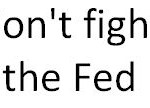Q&A with Michael Kitces of Nerd’s Eye View
Blogging can help advisors attract and retain clients. I’ve decided to collect stories from advisors that illustrate this.
I’m starting a Q&A series with a contribution by Michael Kitces author of the Nerd’s Eye View blog and Pinnacle Advisory Group. Blogging has brought him more visibility, which has “helped to bring clients and cement relationships with centers of influence,” as he explains below.
1. When did you start your blog, Nerd’s Eye View?
The Nerd’s Eye View blog first launched in March of 2008, at the same time that I launched my advanced educational newsletter for financial planners. My vision at the time was that the newsletter would be where I provided content eligible for CFP CE credit – which has a certain length requirement – while the blog was where I would publish “shorter” discussions of technical topics (that didn’t merit a full newsletter issue) and cover practice management ideas (ineligible for CFP CE credit) that I wanted to share.
However, the reality at the time was that the blog had no visibility and generated no traffic, and I generally found it very unrewarding! As a result, I actually stopped writing for the blog altogether after just a few months, and it lay dormant on the site for about two full years.
In the fall of 2010, I “revived” the blog again. The light bulb that had gone off in my head at the time was the rise of social media; in point of fact, Facebook and LinkedIn had been out several years already, and Twitter was almost two years old, so social media wasn’t exactly “new” even at that time. But I realized that, while the challenge of writing a blog is that it’s hard to build an audience, social media provides an opportunity to get the word out about the content. So at the suggestion of advisor tech guru Bill Winterberg, I started up on Twitter (and invigorated a LinkedIn profile which up to that point had been little more than an online resume), and the synergy of the blog and social media has just grown exponentially from there!
2. How has your blog brought you new business or improved your existing client relationships? Please explain and quantify, if possible.
The combination of the blog and social media presence has been absolutely incredible for business, though I will confess that one-to-one situations – “this tweet got me this client” – are almost impossible to track.
It’s important to bear in mind that the blog (and social media) started as something that was attached to my newsletter and then-nascent (in 2008) and growing (in 2010) speaking business, so I measure my business results first and foremost in that context.
My net newsletter subscriber count (plus growth, minus some natural attrition) has grown steadily at a pace of about 15%-20% per year for the past five years, and the only means I have for making the newsletter known is my website (which people visit via the blog and social media).
The speaking business has grown even more dramatically, and there I can often track new business/conferences directly to engagement via social media. I have been invited to speak at conferences through relationships I formed online, and have even been hired to keynote a conference through a series of a half-dozen Twitter direct messages (DMs)! Overall, I have more-than-doubled my speaking fees since I re-launched the blog and started on social media, and despite those price increases my speaking engagements are up 60% from 3 years ago.
Notwithstanding what was originally a focus on the newsletter and speaking engagements, my blog and social media presence has started to significantly “spill over” into marketing for Pinnacle Advisory Group, the financial planning firm where I am a partner. The blogging and social media activity has generated an incredible flurry of media activity; I’m typically fielding three to five media inquiries per week from industry and major consumer publications (and a handful of smaller publications), and my visibility on social media has helped cement several highly visible consumer media opportunities, including becoming a Marketwatch RetireMentor, one of the WSJ Wealth Management Experts, and a member of the CNBC Digital Advisory Council. In the end, we could have hired a media/PR firm for tens of thousands of dollars every year and still not gotten the firm the visibility that I’ve been able to generate “for free” through blogging and social media.
And ultimately all that PR visibility has helped to bring clients and cement relationships with centers of influence. It also bolsters referrals from existing clients; it’s one thing when a client says “work with my advisor, he’s great,” but it’s another when the client says “work with my advisor; did you see the article about his research in the New York Times yesterday?”
3. What blogging techniques or topics have most helped your business —either at Kitces.com or Pinnacle Advisory Group?
This varies a bit by which business I’m using to measure results. In terms of my core writing and speaking business, my technical articles on advanced planning techniques have been most effective at demonstrating and cementing my brand as a financial planning expert. This has helped generate newsletter subscriptions and speaking engagements.
Notably, though, my technical articles have also helped me to build a following of reporters who want to keep up on the latest material I’m studying, researching, and writing about. As a result, the technical articles also lead to a great deal of consumer media exposure.
The content I write on practice management and industry trends has been most effective for reaching our industry press, which indirectly helps to support my brand as a speaker. It has actually been so successful in building my credibility on these issues, though, that it now helps to support several related businesses, including our recruiting firms New Planner Recruiting and Experienced Advisors Recruiting, our investment outsourcing business for other advisors (Pinnacle Advisor Solutions), and what is now a growing series of technology firms I work with on a consulting basis about how to understand and reach advisors.
Overall, I’ve found that the key to success with blogging and social media is sheer consistency. Good articles come and go; I try to make every one a winner, but the data are very clear that… some are better received than others. Balancing content that I create with content that I share has also been key. On social media channels, less than 20% of the content that I share is my own, and I’ve grown a significant following with my “Weekend Reading For Financial Planners” series, where I highlight the best dozen articles I read for the week, with summaries of each and links to click on to view the full article.
Ultimately, the key is to be a resource. Yes, I hope that my content is a resource, but it can’t be the only resource. So I share as much as I can to be helpful to everyone in every way possible; and I hope it’s appreciated that some of it is content I created myself!
4. What are three of your favorite—or most effective—blog posts? Provide the titles, URLs and a comment about why you included them.
Whew, this is a tough question; I’d like to think that everyone I try to create is effective, and I hate to pick favorites!
In terms of overall results and impact, I’d say my top three are:
1) Financial Planning Implications Of HR8 – The Taxpayer Relief Act of 2012. This article was a summary of the fiscal cliff legislation that passed at the very end of 2012. The Senate passed the final version of the legislation a few hours before midnight on New Year’s Eve, the House took it up on New Year’s Day, and the president signed it into law on January 2nd. Anticipating that the House was to pass the legislation and not push us off the fiscal cliff, I actually spent New Year’s morning reading up on the legislation and posting my own “first look” commentary. Despite the fact that article didn’t even post until the early afternoon, and it was a holiday, the post was so widely shared that January 1st of 2013 was the biggest traffic day the site has ever had; and the second biggest day ever was the follow-on traffic on January 2nd! It’s pretty amazing what happens when you publish timely content on an important issue!
2) Should Equity Exposure Decrease In Retirement, Or Is A Rising Equity Glidepath Actually Better? – This article was actually a write-up of some recent new retirement research I did with Wade Pfau. The article received such a strong reception that the blog post alone, and the buzz it created, resulted in coverage in several national publications, including the New York Times, Kiplinger, and AARP. Not only was this great general publicity for the firm, but I’ve been able to track several new business opportunities directly to the publication of this single blog post!
3) Weekend Reading For Financial Planners. About a year after the blog had launched and my social media activity was increasing, I started getting questions from other advisors, basically along the lines of “what do you read to keep up on information the way you do?” I got the question so much, I decided that perhaps I should just start making a list of the best articles I’d read each week. Modeled after the “linkfests” popular in the finance/econ/investment world – but recognizing that there just isn’t nearly as much “news” in financial planning every week – I launched my weekend reading column. Over two years and 100 weekly-reading-summaries later, this continues to be my most popular ongoing content on the blog.
5. What’s your best tip for advisors who blog? Personally, I would love to know the secret of how you manage to spark so many conversations.
I’ve got to give two tips here, as the answer to your question has two key components.
The first tip is that if you want to succeed with blogging and social media it requires consistency, and the only way consistency happens is if you make it habit, and the only way you can create a habit is to make a commitment to a schedule of how often you’re write, with deadlines, and hold yourself accountable to meeting it. I’ve varied my publishing schedule a few times over the years; for a while I was posting once a week, then twice a week, then three times a week, eventually five times a week, but then backed off to three times a week and have stayed there. I now have a pretty consistent routine to manage that consistent publishing schedule; I capture topics I want to write about in a never-ending Evernote list so I will always have lots of ideas when I sit down to write, and I’ve got a process for carving out the time to do it. Granted, I don’t think most advisors “need” to blog as often as I do, but the principle is the same whether you’re trying to write three times a week or just once or twice a month. Have a schedule, set deadlines for yourself, commit to keeping them, and make it a habit.
My second tip is that to be able to create a steady stream of compelling content, focus, focus, focus on your target audience. Think about what their issues are. Read the publications they’re reading. Talk to them constantly (they’re your clients, so hopefully you are, but make sure you’re taking the time to listen to what’s on their minds). Virtually all of the content I write is inspired by a conversation I have at a conference, a question someone emails me, or a question/issue that a client raises. The trap I see most advisors fall into in this area is either that they don’t keep a focus at all – they’re sharing everything from things that matter to their clients, to things that matter to them (which is not always the same thing!), to things that are just plain irrelevant – or they don’t have a clear focus on who their reader is supposed to be and how they can differentiate. Ultimately, this is why having a niche is so important; as financial advisors, few will be capable of differentiating themselves and creating unique content by publishing the same generalized financial information that can be found via Kiplinger, MarketWatch, CNBC, Money, etc. There are lots of generalized consumer financial sites out there, not to mention an already crowded personal finance blogosphere. But with a niche, you can truly specialize; you might be the only one blogging about the latest issues for executives at a particular technology or pharmaceutical company making options decisions, or about a new strategy to manage malpractice insurance costs for OB/GYNs, or about the latest tip for young upwardly mobile female entrepreneurs. Having a focus – having a niche – is a way to stand out from the rest; your audience might be smaller than “everyone” but you can be highly differentiated and clearly stand out as an expert for all the people in that niche. And given that most financial advisors “top out” somewhere around 100-150 active and engaged clients (if not fewer), the reality is that virtually any niche is capable of working when those are all the clients you need for a wildly successful practice!
If you have a great blogging success story worthy of being featured in a future Q&A, please contact me. I’d like to hear from you. If you’d like to write better blog posts, you’ll find step-by-step instructions in my book, Financial Blogging: How to Write Powerful Posts That Attract Clients.





Thank you so much Susan for asking the questions and a big thank you to Michael for answering them! Excellent advice to those of us wanting to learn to better serve our clients.
Tanya, thank you for reading!